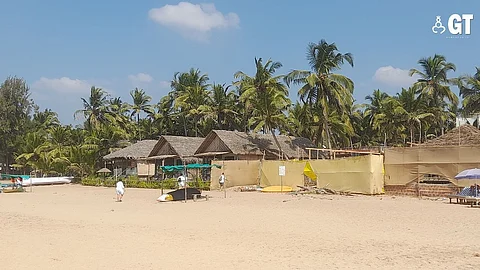

Often, a little can make a big difference and a huge jump can lead to unexpected outcomes. This is the quagmire tourism stakeholders in Goa find themselves in.
“Overpricing is the crux of the problem. An annual increase of 10 or 20 per cent is understandable but 100 per cent is ridiculous,” says Dave from the USA, as he relaxes on the shores of Agonda.
“I came to spend two weeks in Goa with the intention of leaving for Kerala and Tamil Nadu later but have got stuck here because I like the place. Just because I can afford it, does not mean others can,” he says and adds, “Hotels, restaurants and transport are expensive in Goa compared to other States in India and that is why many are opting for other places now.”
I came to spend two weeks in Goa with the intention of leaving for Kerala and Tamil Nadu later but have got stuck here because I like the place. Just because I can afford it, does not mean others can
Dave, US tourist
He is not the only one with that opinion. “Goa has always been a better option for us because the people are different and their way of accepting us is one reason so many foreign and even Indian guests prefer to come here,” believes Ann from the UK, who has been a regular at Agonda for years.
“I first lived in North Goa but moved down South, first to Palolem when it was less crowded, and now here. The beach is nice and the setting is quiet,” says Ann who lives in a homestay for six months.
Ann, who does her cooking at her new found home, adds, “Transport has always been a problem. There is no easily accessible public transport, leaving us at the mercy of taxi drivers or to hire motorbikes which is getting costlier.”
However, food on the coastline of Canacona is not very pricey, especially in places run and managed by locals and hence affordable, though, the rates are different in places run by outsiders.
Transport has always been a problem. There is no easily accessible public transport, leaving us at the mercy of taxi drivers or to hire motorbikes which is getting costlier
Ann, UK tourist
“A fish curry rice in places run by locals normally costs between Rs 150 to Rs 250 with the portions being good and is hygienically prepared. However, some places try to take their guests on a fishing trip,” argues Rehana from North India who has been coming to Galgibaga to enjoy the solitude.
Though tourism stakeholders are feeling the pinch in South Goa, the pain does not seem to linger for long as many have adjusted to the needs of the visitors and are thus moving forward thinking something is better than nothing.
That hotels have placed themselves on a pedestal too high is evident from the occupancy at Nirvana Resort – a hinterland hotel in Curtorim, South Goa. “We have been enjoying around 70 to 80 percent occupancy through the season because we cut down our room tariff. We felt we were too expensive and hence the rollback,” asserts Louis who manages the place.
“We overpriced after the pandemic. It was a knee-jerk reaction but now that things are normalising, we decided to make the necessary changes and the flow of clients is regular,” he admits.
We have been enjoying around 70 to 80 percent occupancy through the season because we cut down our room tariff. We felt we were too expensive and hence the rollback
Louis, Nirvana Resort
It all comes down to the pricing and Dave says, “Pricing is something that can be touched upon by all and can be easily remedied because inflation has not reached the level that makes the rise compatible. A relook at pricing can help the stakeholders come out of the problem.”
Now that the pinch is being felt and course correction within grasp, tourism stakeholders have time to change the course of the roll during 2025.